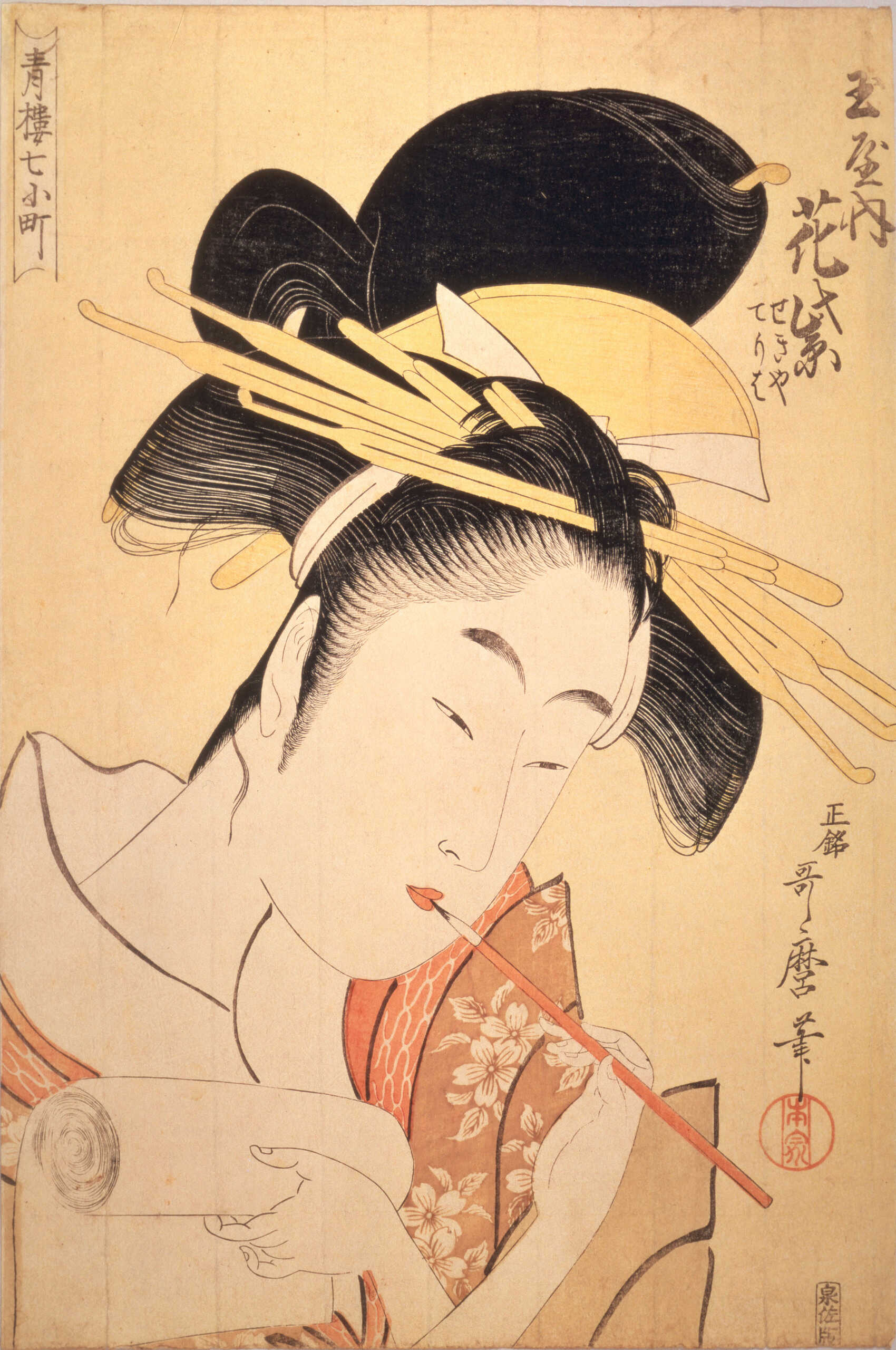| 作家名 |
喜多川 歌麿
きたがわ うたまろ(うたまる)
KITAGAWA Utamaro(Utamaru)
[1751-1806]
|
|---|---|
| 作品名 |
青楼七小町 玉屋内 花紫 せきや てりは
せいろうななこまち たまやうち はなむらさき せきや てりは
Hanamurasaki of Tamaya, from the series Seven Komachis of Yoshiwara
|
| 技法/材質 |
大判錦絵
|
| 寸法 |
39.1×24.8cm
|
| 制作年 |
寛政6~7年(1794~95)頃
|
| 受入年度/種別 |
平成03年度/購入
|
| 分類 |
浮世絵版画/近世版画
|
| 所蔵品番号 |
2913020
|
花紫は、吉原の江戸町一丁目玉屋山三郎抱えの"呼び出し"、「せきや」と「てりは」はお付きの禿である。吉原細見と遊女名・禿名を対照してみると、寛政6年春の吉原細見にのみ完全に一致するので、その頃の刊行と考えられる。朝、客に文を書いている姿を捉えている。簪に髪を巻く仮の髷である貝髷(ばいわげ)に結い、平紐で崩れないように結わえているが、この図の髪型はさらに左右に小さな輪を作っている。櫛目跡の複雑な髪の生え際を表す「毛割」を表現したものとしては最も早い例と思われる。大事な客への手紙には、読み次第来てくれるよう、紅をつけた唇で文をくわえ、2度息を吹き込んで封をする風習があったようである。
Hanamurasaki was a “Yobi-dashi” high-ranking prostitute employed by Tamaya Sanzaburo of Edo-cho 1-chome in the Yoshiwara, while “Sekiya” and “Teriha” were her accompanying maids. Comparing the courtesan’s name and maids’ names in Yoshiwara Saiken (the Guide to Yoshiwara), there is only an exact match for spring of Kansei 6 (1794), suggesting that this picture was published around that time. It captures her in the morning, writing a letter to her customer. Her hair is styled with a “baiwage”, false hair arranged vertically wound round a hairpin, and is tied with flat cords so as not to collapse. Further, the hairstyle in this picture has small rings created to the left and right. It is thought to be the earliest example expressing “kewari (hair cracks)” that show details of the hairline after being combed. It seems there was a custom when writing letters to important customers of adding some words written using rouge from the lips, and sealing the letter by blowing on it twice, to encourage them to come as soon as they had read the letter.


